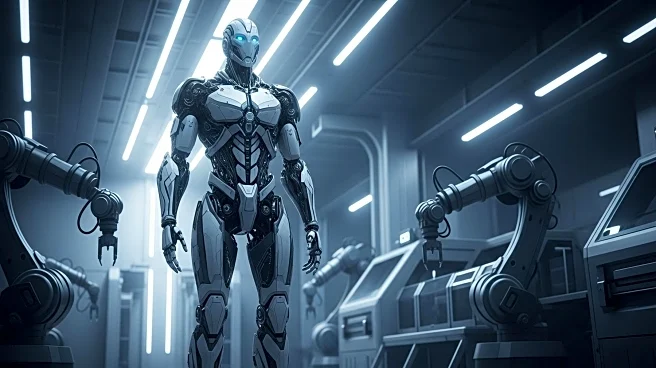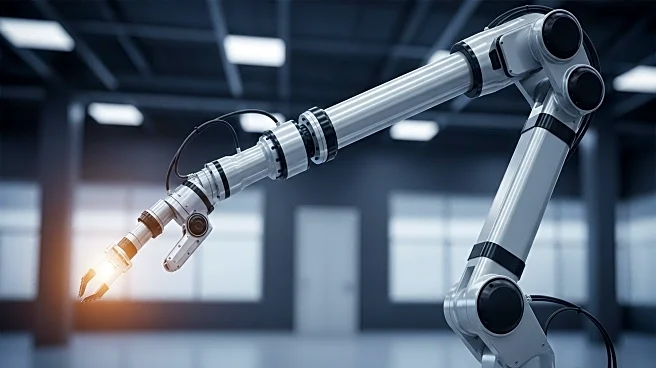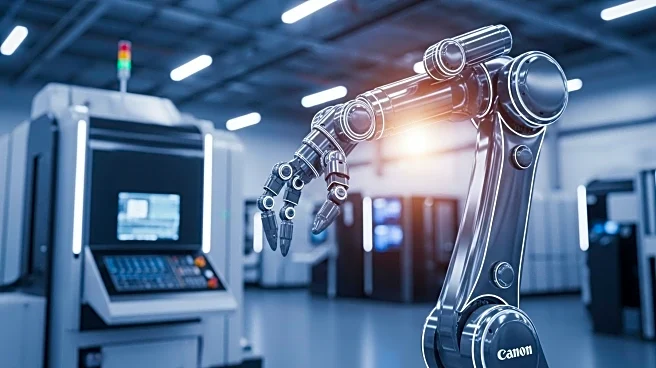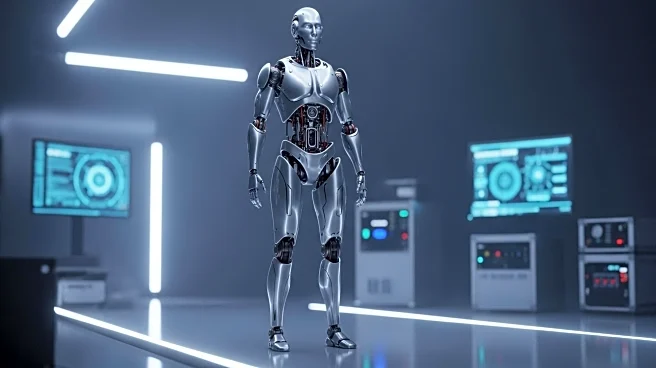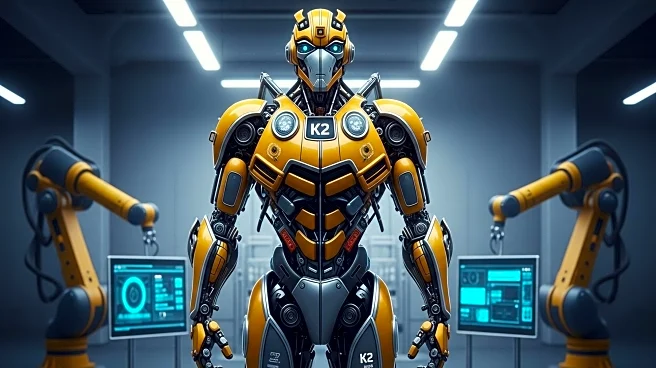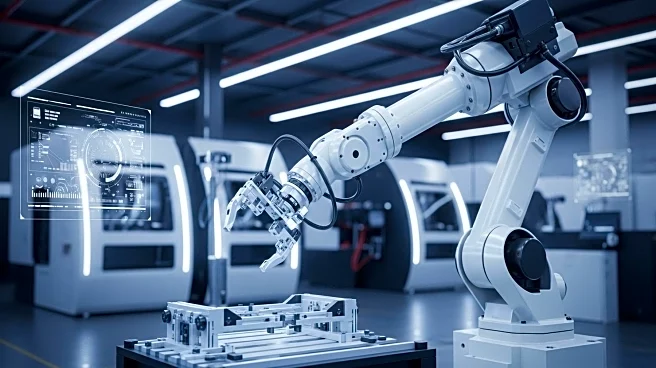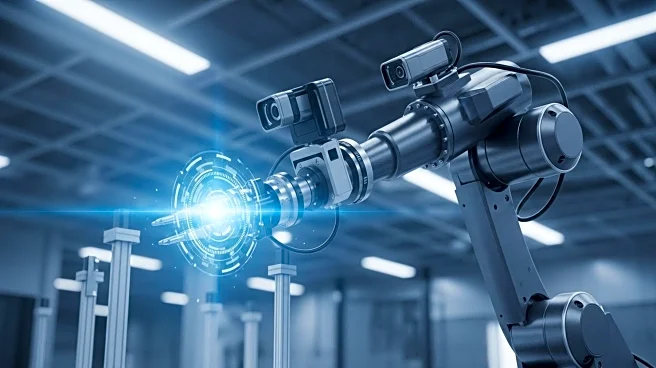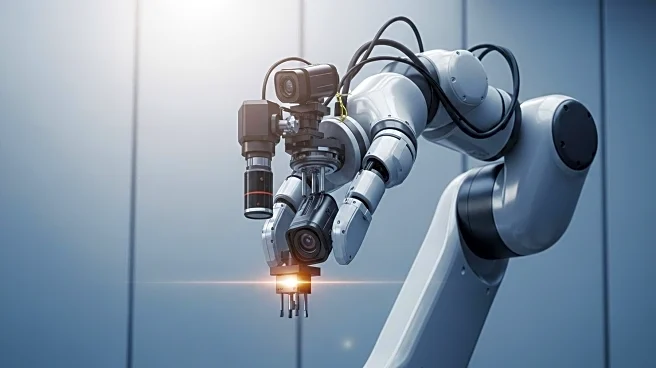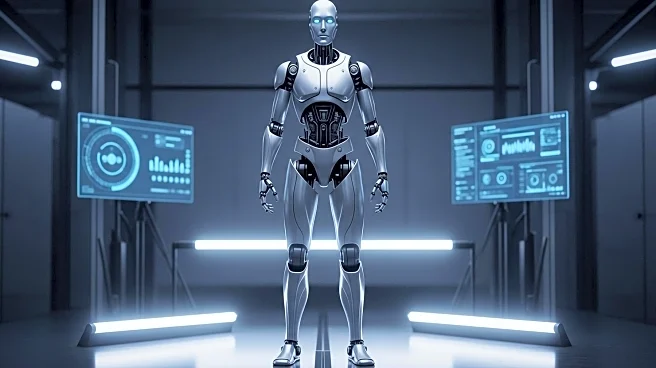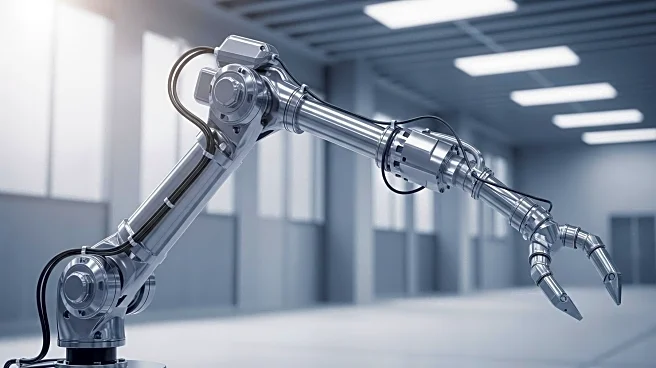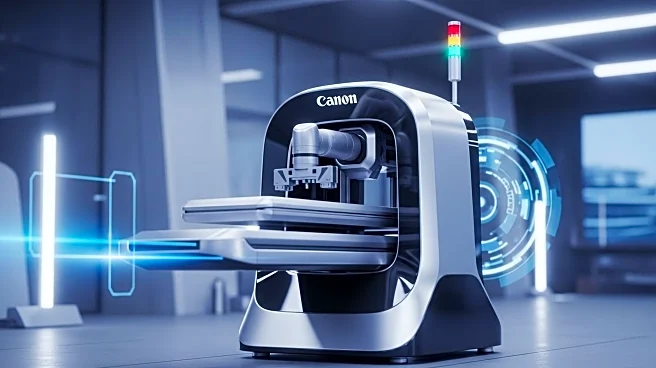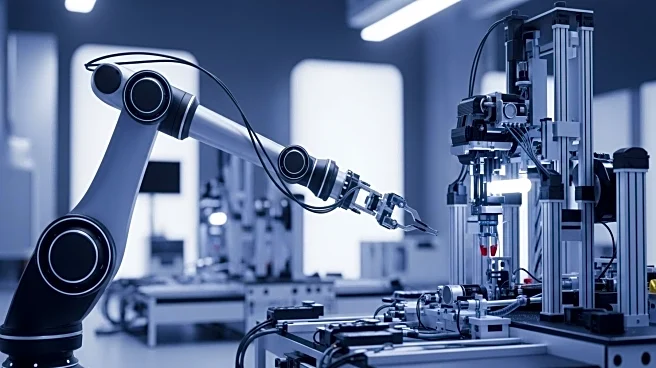What is the story about?
What's Happening?
Shanghai Kepler Robotics Co., Ltd has announced the commencement of mass production for its K2 'Bumblebee' model, marking a significant milestone in the commercialization of humanoid robotics. The K2 'Bumblebee' is the world's first commercially available hybrid-architecture humanoid robot, now shipping to customers. This development transitions the technology from research prototypes to fully market-ready systems, representing a structural change in the global humanoid robotics sector. The robot features a hybrid serial-parallel design, combining roller screw linear actuators with rotary actuators, enhancing stability and performance in industrial environments. The production video showcases the robot's capabilities, including a straight-knee bipedal gait and various operational tests, confirming its readiness for real-world deployment.
Why It's Important?
The mass production of the K2 'Bumblebee' represents a pivotal moment for the humanoid robotics industry, as it moves from a capital-driven phase to one defined by scalable market adoption. This development could significantly impact industries such as logistics, manufacturing, and specialized operations by introducing advanced automation solutions. The robot's competitive pricing at RMB 248,000 per unit lowers barriers for large-scale adoption, making advanced robotics accessible to a broader range of customers. As humanoid robots become integral to industrial ecosystems, they are expected to enhance productivity and safety by taking on repetitive and high-risk tasks.
What's Next?
Kepler Robotics is committed to accelerating the development of a global humanoid robotics ecosystem. The company plans to overcome current barriers such as fragmented standards and limited local service networks by partnering across the supply chain. With strategic investors and a hardware-first approach, Kepler Robotics aims to secure critical positions in the supply chain, ensuring stable component sourcing and driving down costs through scale production. This strategy is expected to facilitate wider adoption of humanoid systems, enabling more organizations to benefit from advanced automation.
Beyond the Headlines
The introduction of the K2 'Bumblebee' into operational environments could trigger long-term shifts in how industries approach automation and workforce management. As humanoid robots become more prevalent, ethical and legal considerations regarding their integration into human workspaces may arise. Additionally, the development of a robust humanoid robotics ecosystem could lead to new standards and regulations, shaping the future of automation technology.
AI Generated Content
Do you find this article useful?
